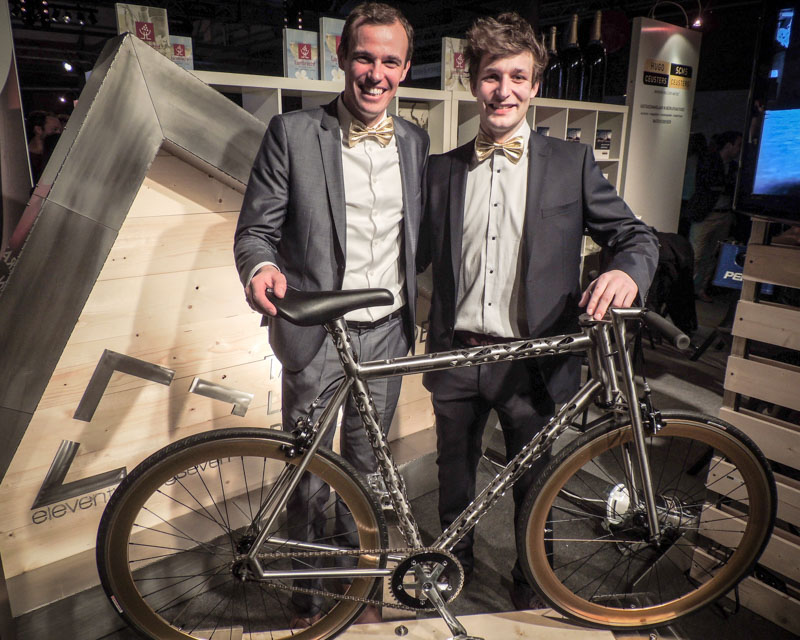
Tobias Knockaert is a recent industrial design graduate from Belgium, Bruges. For his final school project, he designed a custom bicycle frameset using laser cutting technology to precisely size and miter the frame tubes. Since people were generally enthusiastic about his prototype, after graduation Tobias decided to start a company with business partner Karel Vincke, an industrial engineer and owner of V.A.C. Machines in Bruges. They plan to produce the bespoke Erembald bike in a limited edition run of 50, but that won’t be the end of it. After these first bikes are sold out, they will be launching another limited edition, custom fitted design.
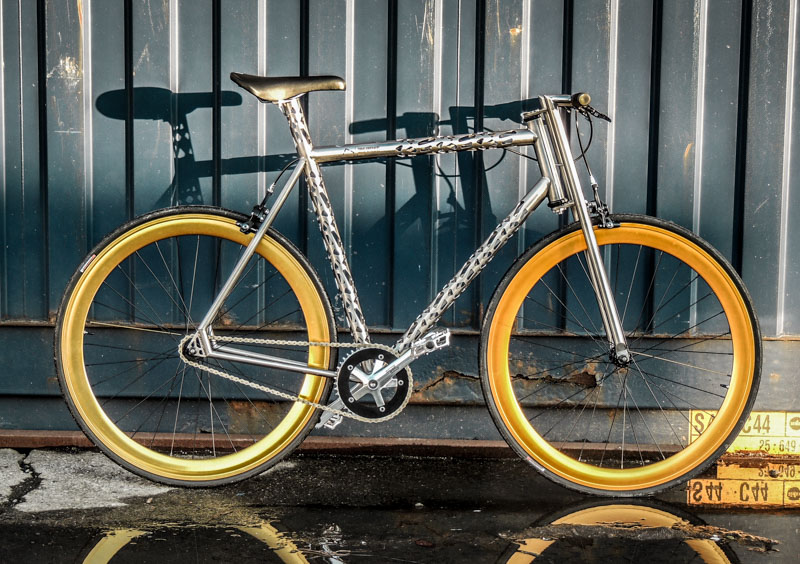
Most likely, the first thing that you noticed about the Erembald was the perforated tubing detail. In a FAQ page on the website, they point out that the perforated pattern is purely for aesthetics, and that they use larger (40mm) diameter tubes with a 2mm wall thickness to ensure frame strength. Though the tubing is heavy, the overall frame weight is comparable to a standard steel frame due to the fact that much of the material is machined away.
That issue of frame durability was my biggest concern when I first saw the bike. I immediately questioned Tobias about it, and he responded by sharing a bit of the history of his development process:
“Originally the intention of the master thesis was to reduce weight by laser cutting a kind of truss structure out of a (square tube). After a lot of testing and measuring it seemed clear that is was unattainable to obtain a lower frame weight than carbon frames. In the end; what’s the point of reducing frame weight from 900 to 850 grams? The cut-out struss structure was much weaker and tended to kink. So this was a dead end road.
During this process however, we found out that we could use laser cut snap connections and parametric design which enhance flexibility and speed in the whole manufacturing process. That’s our true innovation.
We started thinking of using cut-out pattern as design feature and to showcase our technology. We knew we would lose strength so we over dimensioned our tubes (40 x 2 mm). Such tubes are approx 10 times stiffer and 5 times stronger than a 25 x 1 mm tube (often used in bicycles) (this is not completely correct and depends on a lot of other material/section properties, but I will not go in detail about this). But we cut away half of the material, so the tube gets weaker. We did some CAE studies and found out our cuts would cause peak tensions. You can see, this was kind of a trial/error case: How much material can we cut away to maintain a reasonable strength-stiffness-weight ratio? CAE can help a lot, but such bicycle structure is complex and boundary conditions are hard to define.
We then just decided to start making some bikes and test it for real. We performed lab tests and our frames are 1.5 times as stiff as a competition carbon race frame. After that, we built 6 prototypes and rode them for 4 months here in Belgium. None of them showed failure, so we’re pretty sure our frames are solid. They are a bit over dimensioned (a complete bicycle weighs 12 kg) but we don’t care. We’re making exclusive personalized bikes, not race machines.”
I think that last sentence is key, because there is really more to this than a bespoke urban bike with perforated tubes. One of their missions with the new company is to bring bicycle building back to Belgium, a country that has lost its traditional bicycle manufacturing base as those jobs have moved to lower wage countries. The Belgian carbon race frames manufactured at OEM factories in China won’t coming back any time soon, so maybe new “lifestyle” bikes like the Erembald are a way to keep the country’s bicycle manufacturing heritage alive.
Check out the ElevenTwentySeven website for more information about the bikes. I also encourage you to watch their video which shows a bit of the design and manufacturing process. It is a pretty interesting design and business model, so I look forward to seeing their next limited edition bike.
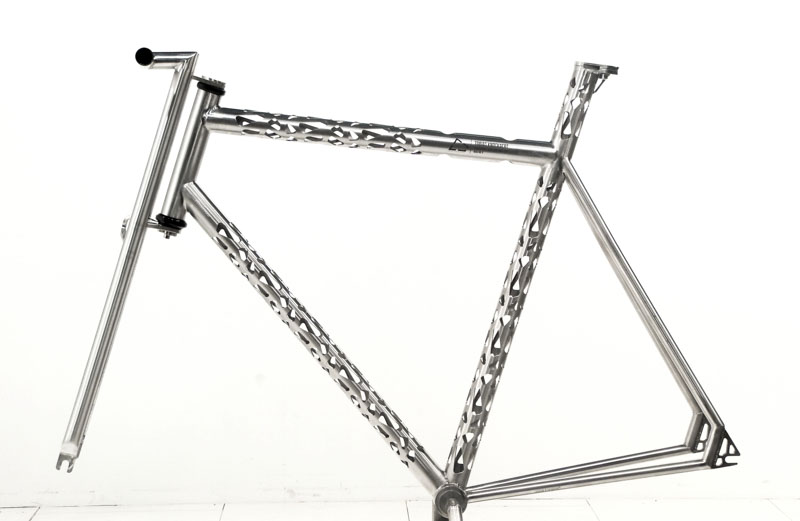
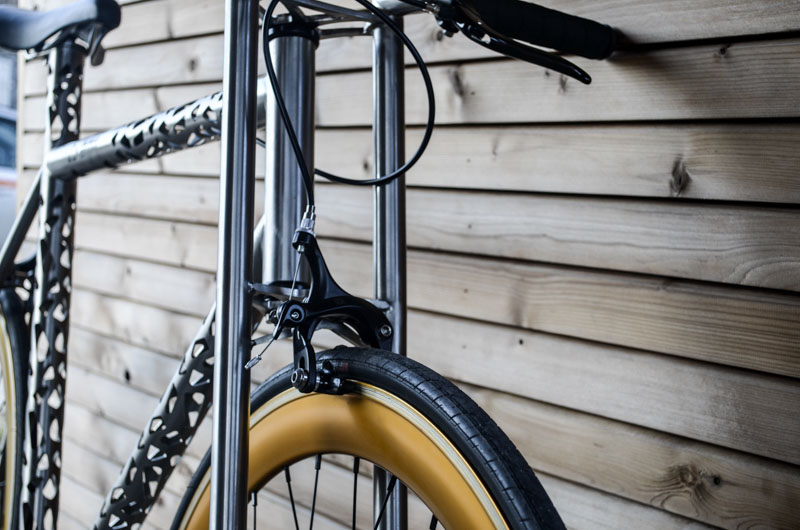
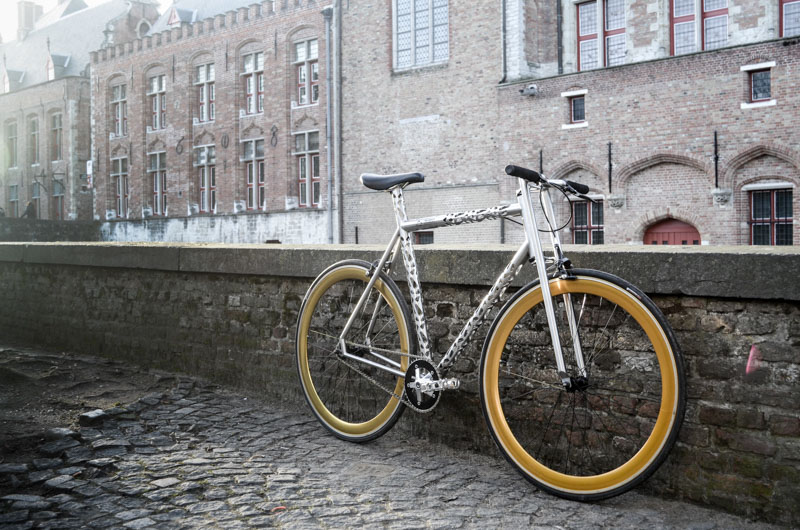
Subscribe to the email newsletter… and follow Bicycle Design on Facebook , Twitter , Pinterest , and Google + .

Leave a Reply